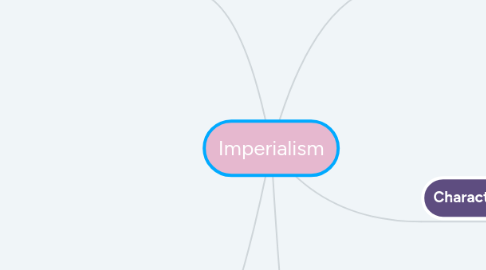
1. Five Theories Used to Justify Imperialistic Expansion
1.1. Conservative Economic Theory
1.1.1. The better-developed nation sees imperialism as a means of maintaining its already successful economy and stable social order. By securing new captive markets for its exported goods, the dominant nation is able to sustain its employment rate and redirect any social disputes of its urban populations into its colonial territories. Historically, this rationale embodies an assumption of ideological and racial superiority within the dominant nation.
1.2. Liberal Economic Theory
1.2.1. Growing wealth and capitalism in the dominant nation results in the production of more goods than its population can consume. Its leaders see imperialist expansion as a way to reduce its expenses while increasing its profits by balancing production and consumption. As an alternative to imperialism, the wealthier nation sometimes chooses to solve its under-consumption problem internally through liberal legislative means such as wage control.
1.3. Marxist-Leninist Economic Theory
1.3.1. Socialist leaders like Karl Marx and Vladimir Lenin rejected liberal legislative strategies dealing with under-consumption because they would inevitably take money away from the dominant state’s middle class and result in a world divided into wealthy and poor countries. Lenin cited capitalist-imperialist aspirations as the cause of World War I and called for the adoption of a Marxist form of imperialism instead.
1.4. Political Theory
1.4.1. Imperialism is no more than an inevitable result of the attempt of wealthy nations to maintain their positions in the world’s balance of power. This theory holds that the actual purpose of imperialism is to minimize a nation’s military and political vulnerability.
1.5. The Warrior Class Theory
1.5.1. Imperialism actually serves no real economic or political purpose. Instead, it is a pointless manifestation of the age-old behavior of nations whose political processes have become dominated by a “warrior” class. Originally created to satisfy an actual need for national defense, the warrior class eventually manufactures crises that can only be dealt with through imperialism in order to perpetuate its existence.
